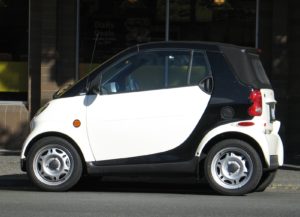
Easier, Cheaper, Better
So, I was listening to news radio a few weeks ago (oh, the joys of adulthood!), to a story about electric cars. Without getting into politics or economics, let’s assume for the moment that people driving electric cars might be a good thing. Because the interesting part of this discussion was a question to the interviewee – How could the transition to most or all people driving electric cars happen? And the answer was so beautifully behavioral. In short, to get most people to drive electric cars (sooner, rather than later, when that might be all that’s available), electric cars need to be easier to buy than gas-powered cars, cheaper than gas-powered cars, and better than gas-powered cars, today. The INDUSTRY and the ENVIRONMENT need to change. Not the buyers.
And so it is with all of our behavior changes. Shame and willpower get us nowhere. Well, that’s not quite true. Unfortunately, shame and willpower get us a tiny distance in the direction we’re headed, and then they collapse on us, leaving us typically worse off than we were before, with more shame, which leads to more undesirable behavior, and so we look more intensely for “more willpower” to get us to our behavior changes. And that system, while it fits nicely with the sort of hyper-American, Protestant-ethic model that likes to believe we can all be anything we want to be with enough will or inner strength or simple desire, is almost entirely useless.
If we want to really change behavior in the long term, we need to think about how to make the new, desired behavior easier, cheaper, and better immediately.
Here’s an example: Does a client want to exercise more? Preferably, we need to find a way to make that easier, cheaper, and better than not exercising, right now.
- What does easier mean for them? It’s going to be a challenge to make something like physical work seem like less effort than NOT doing physical effort! DO they want to try a gym? Help them find a close one, that’s on the way to or from work. (The farther away the gym is, the less often people go. ) But walking at the nearby park or exercising at home might be easier still. Is part of “easier” training their middle school age kid to do some of the laundry, so that the increase in workout clothes doesn’t feel like a burden? Does it mean getting a trainer so that they can learn to exercise in a way that’s “easier” on their knee joints? Let’s plan this in the “preparation phase” so that the benefit is immediate!
- What does cheaper mean for them? This one usually means straight “less expensive,” but it might also mean less expensive in terms of other resources, like time spent. Would they be missing out on time with lover or kids? Could they join the exercise effort so that time isn’t missed? Walking is free, which might make it better than the gym, but it’s not cheaper than doing nothing… unless you can help them schedule their exercise at a time they might otherwise be spending money, like out to lunch or online shopping. If exercising in the morning helps them be more productive or in a better mood during the day, or sleep more restfully at night, maybe we could help them monitor that the very first week, to help “see” that additional value right away.
- What does better mean for them? Turns out rich folks will totally go to a far away gym as long as it’s SUPER nice! That after-workout-whirlpool is a Day 1 value and they should use it Day 1. Better health, fitness, weight loss, etc…. nice for long term goals but not helpful for that early part of the change process. Is the time-for-self they could get at the gym something that they need and want but would feel guilty about? Can we help reduce that barrier before they start, so that exercise gives them something nice right at the start?
For long term, positive change – we don’t want to rely on willpower, and we certainly don’t want to get stuck in the shame cycle (that just leads to more Oreos, or self-criticism, or avoidance, or…). We want to change our environments to maximize the chances of following through – make the change as easy, cheap, and desirable as possible right away. If we can make it easier, cheaper, and better than the alternative, our chances are REALLY good.
Comment below: How have you successfully used something like this model with yourself or clients in the past? Have you had the experience of thinking that a great change plan was in place, but one of these things got in the way?